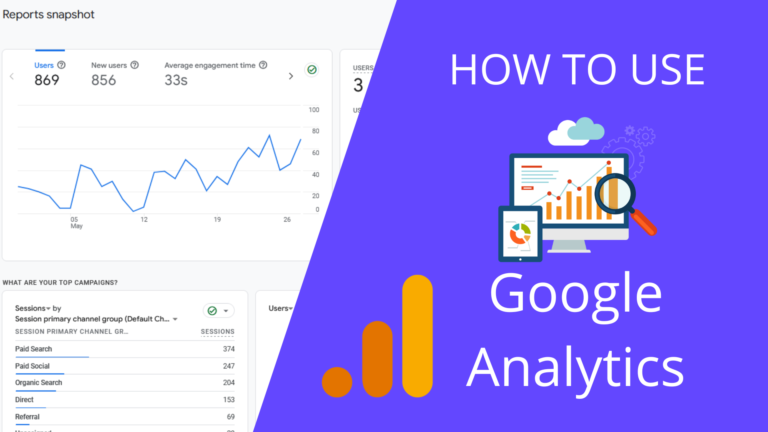Date of publication:
24 Apr. 24How To Choose A Target Audience For A Marketing Campaign
Correctly defining the target audience (TA) is one of the key factors for the success of marketing strategies, leading to increased sales, profitability, and business development.
It is pointless and irrational to start a business or launch a marketing campaign in an existing business without defining the target segment that all efforts in this direction will be aimed at. Therefore, it is so important to understand what a group of people interested in a specific product represents and how to constantly replenish its ranks.
Defining the Target Audience
The importance of understanding the target audience of a business, product, website, or specific marketing campaign is invaluable at any stage of commerce, from forming an idea to promotion. This term is commonly used in marketing and advertising to define a group of people potentially interested in a specific product or service and capable of acquiring it. In other words, the target audience (TA) is the potential customers of the brand, for whose needs all marketing campaign efforts should be directed.
Marketing professionals need to understand the primary value of the TA for the company. It lies in the high probability that this customer segment will become a buyer of its product. It is based on the preferences of the TA that marketing campaign strategies are developed to increase the effectiveness of advertising activities and the profitability of the business as a whole. However, it should be borne in mind that minimal data about the TA (age, gender, and approximate income level) is not enough.
Why It Is Important To Define The TA For Marketing Campaigns
Defining the TA is a key step in developing marketing campaigns. There are several reasons why it is necessary to establish the TA, including:
- Gaining a competitive advantage. Defining the TA contributes to the formation of unique offerings that optimally meet its expectations.
- Creating effective advertising. Knowing your TA makes it easier to create more effective advertising materials and messages that increase the likelihood of a responsive reaction to advertising.
- Optimizing resources. By identifying the target audience, you can save resources by directing marketing campaigns exclusively to people who are more likely to become brand customers.
- Developing personalized strategies. Understanding the characteristics and needs of the target audience allows for the creation of personalized marketing strategies.
Also, knowledge of the characteristics of the TA allows for more effective interaction with it and contributes to improving mutual understanding.
Criteria for defining the target audience
To determine whether a particular person belongs to a specific target audience, it is necessary to establish compliance with specific criteria. It is necessary to understand:
- Whether the person is capable of being interested in this product. For example, a company that sells meat products cannot target its marketing efforts towards vegetarians.
- Whether they have the ability to purchase the product. For instance, companies selling red fish or truffles are unlikely to find their potential buyers among people whose incomes are below the average level.
- Whether the customer is susceptible to competitive advertising. This criterion relates to the potential for competitors to easily lure away a company’s loyal customer by offering products or services with similar characteristics.
Classification Of The Target Audience
For achieving the goals of a marketing campaign, it is not enough to understand the concept of the target audience and why it needs to be defined. It is also important to understand that it can be of several types, for example:
- B2B and B2C. The target audience for B2B is a commercial entity, while for B2C, it is an individual. Based on this, the concepts of product implementation, target audience profiles, and positioning will be completely different.
- Primary and secondary. The primary audience includes those who make a choice with subsequent purchase. The secondary audience influences the choice. For example, jewelry is often purchased by men, who are the primary audience, while women, wishing to receive “gold-diamonds” as a gift, are almost always the secondary audience.
- Broad and narrow. For example, coffee enthusiasts represent a broad audience, while those preferring ground Italian coffee represent a narrow one.
Methods For Defining The Target Audience
There are several methods that marketers use to define the target audience. The most popular of them are:
- “Reverse” – based on the benefits of the product or service to the buyer. The search scheme includes determining the result of the purchase, the buyer’s path, formulating hypotheses regarding the client’s motivation for its successful completion, and identifying groups of people who may potentially need the product.
- “5W” – based on finding answers to 5 questions: What? (what the product is), Who? (who the potential buyer is), Why? (why this product), When? (when the purchase can be made), Where? (where the purchase will be made).
- “From the product” – effective for a unique product and is based on answers to questions: what requirements are imposed on the product and what basic needs can be met with its help, gender, age, status, occupation of buyers and their psychographic characteristics, where information about the product is obtained, motivations, and reasons for purchase.
Of course, there are many more methods and techniques in the arsenal of marketers; however, any of the above can successfully achieve goals.
Portrait of the Target Audience: What Does the Potential Customer Look Like
Conducting effective marketing campaigns can be achieved by understanding the principles of correctly defining the target audience and creating a portrait of its typical representative. Based on this data, it is possible to write texts and launch advertisements effectively, deploy funnels. To do this, it is necessary to consider:
- The reasons for purchasing from the company or its competitors.
- Emotions and associations associated with the brand’s product. For example, feelings of health, increased activity, happiness, achieving a new level of status.
- Blogs and forums most frequently visited by the customer, as well as social networks where they are registered.
- Problems solved with the help of the product.
Certainly, all this should be analyzed after socio-demographic characteristics of the potential client are identified – age, gender, income level, marital status, profession.
Additional Methods Of Analyzing The Target Audience
In addition to the main methods of identifying and shaping the target audience, additional methods can be used to gather information, such as surveying customers using questionnaires, surveys, and other methods of direct interaction with the customer. Useful information can be obtained by talking to staff who work with customers directly – consultants, managers, call center operators. Studying case studies on targeted advertising can be an important source of information about the target audience. Knowing the issues addressed by the marketer will provide insight into the target audience and suggest paths to success.
An inexhaustible source of informative data is tracking profiles and metrics in social networks. A personal analytics system in the “Statistics” section on Instagram, Facebook, or other social networks will provide information about the accounts reached. Services like Popsters, Target Hunter, and Facebook Insights can help find answers to questions about the content that is a priority for the target audience. Evaluating your own website with Google Analytics and analyzing competitors’ actions can help address the issue.
How to Avoid Common Mistakes When Defining the Target Audience
To ensure that the efforts of specialists developing marketing strategies are not ineffective and futile, it is necessary to try to avoid the most commonly made mistakes when defining the target audience for specific marketing campaigns. These include:
- Mediocre, non-specific descriptions of the buyer.
- Focusing only on the main segment of the audience, excluding from the analysis groups of people who constitute a small percentage of the target audience.
- Excessive segmentation of the target audience, dividing it into dozens of segments.
- Lack of specific parameters for the target audience (goals, views, dreams).
- Exclusion of potential “paying” groups from the criteria (one category of buyers often consumes the product, while another category makes the actual payment).
Conclusions
A correctly and competently defined target audience is one of the pillars of successful marketing in general and conducted marketing campaigns in particular. If in product manufacturing, choosing sales channels, developing pricing policies, it is simply important, then at the stage of campaign strategy development, the issue of identifying the target audience takes a leading position.
As you can understand, this issue is not so simple to solve. Data analysis will provide specialists with general information, and analyzing services such as Google Analytics can be useful in this regard. However, they cannot test the pains, doubts, desires of customers. Interviews and questionnaires for identifying the target audience are good, but not everyone is eager to participate in them. A survey of website visitors will allow you to assess the situation from the inside, but it is impossible to communicate with each one. That is why only professionals should tackle this issue. Otherwise, the result of identifying the target audience will be a blurred image, not a voluminous and multifaceted portrait, and the marketing campaign will be a waste of money and time.



